Featured Articles
Some Connected The Dots Before Mayweather-Pacquiao

I tried to sound the alarm bell in this space on the inevitable clash between Floyd Mayweather and Manny Pacquiao, at each stage, for literally years.
Today everyone is all over the place saying that the Mayweather-Pacquiao fight was a waste of time and money. Those saying such things are rightly upset because there’s a chance Manny Pacquiao 57-6-2 (38) may have gone into the fight with an injured shoulder. They’re also mad and disillusioned that the fight wasn’t competitive and didn’t come close to meeting its expectations. And to those who share those sentiments, I say, “You were warned!”
You were warned in this space countless times since at least 2012, how the Mayweather-Pacquiao clash was a “faux big fight and production.”
The production/promotion of Mayweather vs. Pacquiao was the greatest five-year sting perpetrated on boxing fans and uninformed writers in history. Ever since Mayweather barely defeated Oscar De La Hoya in 2007, the boxing establishment has been looking for a monster to challenge the undefeated monster named “Money.” Thus the creation of the Philippine dynamo Manny Pacquiao, the humble Christian who electrified boxing fans in lower weight divisions seemed the perfect foil to the narcissistic, garish and bragging Mayweather 48-0 (26).
If you read any of the pre-fight content in this space before the fight, you must have read “Mayweather-Pacquiao: “Is It A Legit Super Fight Or A Manufactured One.” It was detailed how the fight was more the byproduct of a great marketing and promotion campaign than it was a true super fight between two near equals who were on a collision course, who had to eventually meet. The fact that Pacquiao was knocked out for the count by Juan Manuel Marquez in 2012 didn’t derail the campaign at all. All that kept being pushed on the wanting to be sold fans was how Mayweather had to be beaten and only Pacquiao could deliver the desired result.
There was another column titled Mayweather-Pacquiao: “Why It’s A Dead End Super Fight” in which it was explained how the fight was basically a match race and was a road to nowhere and wouldn’t shape boxing’s future landscape a bit. Now it may be the ruination of it, at least on PPV. Mayweather-Pacquiao was purposely made to satisfy the manufactured thirst that boxing fans and the media needed quenched, and only that fight could do it. Then there was content in an article titled Mayweather-Pacquiao: “If There’s No Stoppage The Ending Will Be Controversial,” suggesting that the fight, if it goes to a decision, will not be conclusive. Well, it went the distance, it was one-sided and now there’s the revelation Pacquiao may have gone into the ring with an injured shoulder. Now you’re left to speculate and ponder that perhaps Manny could’ve competed better if he were healthy. And just in case you’re wondering, don’t! If Mayweather and Pacquiao fight again it’ll be a repeat only more one sided. And that’s because Mayweather would go into a rematch knowing things he only thought before. Things like how he can handle Pacquiao’s power and how easy he was to time and counter. On the other hand, Manny goes in questioning himself in ways he never dreamed of before the bout.
Countless times in this space it was stressed how Pacquiao wouldn’t be as tough for Mayweather to conquer as Marcos Maidana (Feb 20th article) was in either fight, and he wasn’t. Then on the day of the fight an article titled “Why Mayweather Will Beat Pacquiao Tonight” ran on thesweetscience.com. It was explained how Mayweather owned the stylistic advantage and how those who detailed via their words and/or YouTube videos that Pacquiao owned the more judge-friendly style totally missed it, and there was a dimension of boxing that they just didn’t know existed or understand. It was highlighted in the May 2nd column that Mayweather’s straight punching and accuracy would stymie Pacquiao’s aggression, and how easily Mayweather would reject Manny’s sporadic runs and attacks. It was touched on how Pacquiao didn’t have the power to make Mayweather do a single thing that he didn’t want to do, and he didn’t. The predictions above, while easy, nevertheless turned out to be true.
With the fight now behind us, it wasn’t close and lacked drama after the fifth round, sixth at the latest. Mayweather-Pacquiao has to go down as the biggest Brinks job and sting in boxing history. Everyone was played by both Floyd Mayweather and Manny Pacquiao, especially Mayweather. The longer Floyd put off the fight the more the risk shrunk and the purse grew. Finally, after both Floyd and Manny ran out of opponents to face and the public became fed up with them not fighting each other, they finally agreed to give the public one more bath while attending a Miami Heat basketball game.
If you bought the fight and were expecting something substantive, get over being duped because you are not alone. It was a manufactured attraction that was never going to be special or memorable. It was very transparent to see through if you weren’t trying to con yourself into thinking that Mayweather-Pacquiao was this generation’s version of Ali-Frazier/Foreman or Leonard-Duran/Hearns. Now you know for a fact that it wasn’t!
So here’s a heads up – don’t be fooled into buying a rematch if they dare try to push it on you, and they’re just brazen enough to do it. Don’t fall for the line how Pacquiao competed with one arm and wasn’t stopped or how Mayweather really just ran. Pacquiao was never in the fight and Mayweather didn’t run, not at all. Pacquiao is too small and doesn’t match up with Mayweather stylistically, that will never change. If they fight again, it would be a rerun, only not as close as it was the first time.
Mayweather only did on Saturday night what he was supposed to do, and that was beat a smaller fighter who has declined more rapidly than he has who already lost five times prior. If Mayweather wants to spout off how he’s “TBE” because he became the sixth fighter to beat Manny Pacquiao, nobody who knows anything worth knowing about boxing believes it. Actually, it’s so absurd it’s not even worth a laugh.
In closing, once more – don’t let them rip you off or con you into buying a Mayweather-Pacquiao rematch. Unless of course you like being gouged out of your money and love watching one-sided fights knowing the B-side has no chance to win.
Frank Lotierzo can be contacted at GlovedFist@Gmail.com
Featured Articles
History has Shortchanged Freddie Dawson, One of the Best Boxers of his Era
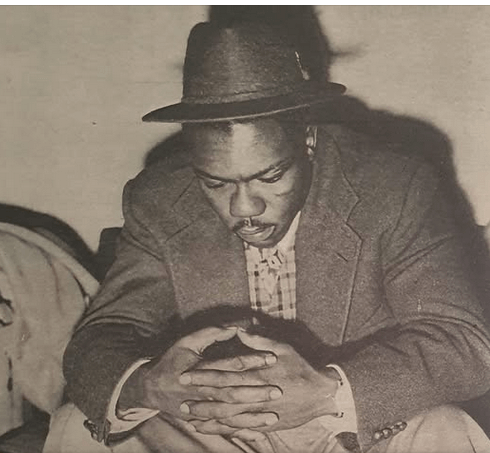
History has Shortchanged Freddie Dawson, One of the Best Boxers of his Era
This reporter was rummaging around the internet last week when he stumbled on a story in the May 1950 issue of Ebony under the byline of Mike Jacobs. Boxing was then in the doldrums (isn’t it always?) and Jacobs, the most powerful promoter in boxing during the era of Joe Louis, was lassoed by the editors of the magazine to address the question of whether the over-representation of black boxers was killing the sport at the box office.
This hoary allegation had been kicking around even before the heyday of Jack Johnson, bubbling forth whenever an important black-on-black fight played to a sea of empty seats as had happened the previous year when Chicago’s Comiskey Park hosted the world heavyweight title fight between Ezzard Charles and Jersey Joe Walcott.
Jacobs ridiculed the hypothesis – as one could have expected considering the publication in which the story ran – and singled out three “colored” boxers as the best of the current crop of active pugilists: Sugar Ray Robinson, Ike Williams, and Freddie Dawson.
Sugar Ray Robinson? A no-brainer. Skill-wise the greatest of the great. Even those that didn’t follow boxing, would have recognized his name. Ike Williams? Nowhere near as well-known as Robinson, but he was then the reigning lightweight champion, a man destined to go into the International Boxing Hall of Fame with the inaugural class of 1990.
And Freddie Dawson? If the name doesn’t ring a bell, dear reader, you are not alone. I confess that I too drew a blank. And that triggered a search to learn more about him.
Freddie Dawson had four fights with Ike Williams. All four were staged on Ike’s turf in Philadelphia. Were this not the case, the history books would likely show that the series knotted 2-2. Late in his career, Dawson became greatly admired in Australia. But we are jumping ahead of ourselves.
Dawson was born in 1924 in Thomasville, Arkansas, an unincorporated town in the Arkansas Delta. Likely a descendent of slaves who worked in the cotton plantations, he grew up in the so-called Bronzeville neighborhood of Chicago, the heart of Chicago’s Black Belt.
The first mention of him in the newspapers came in 1941 when he won Chicago’s Catholic Youth Organization (CYO) featherweight title. In those days, amateur boxing was big in the Windy City, the birthplace of the Golden Gloves. The Catholic Archdiocese, which ran gyms in every parish, and the Chicago Parks Department, were the major incubators.
In his amateur days, he was known as simply Fred Dawson. As a pro, his name often appeared as Freddy Dawson, although Freddie gradually became the more common spelling.
Dawson, who stood five-foot-six and was often described as stocky, made his pro debut on Feb. 1, 1943, at Marigold Gardens. Before the year was out, he had 16 fights under his belt, all in Chicago and all but two at Marigold. (Currently the site of an interdenominational Christian church, Marigold Gardens, on the city’s north side, was Chicago’s most active boxing and wrestling arena from the mid-1930s through the early-1950s. Joe Louis had three of his early fights there and Tony Zale was a fixture there as he climbed the ladder to the world middleweight title.)
The last of these 16 fights was fatal for Dawson’s opponent who collapsed heading back to his corner after the fight was stopped in the 10th round and died that night at a local hospital from the effects of a brain injury.
Dawson left town after this incident and spent most of the next year in New Orleans where energetic promoter Louis Messina ran twice-weekly shows (Mondays for whites and Fridays for blacks) at the Coliseum, a major stop on boxing’s so-called Chitlin’ Circuit.
That same year, on Sept. 19, 1944, Dawson had his first encounter with Ike Williams. He was winning the fight when Ike knocked him out with a body punch in the fourth round.
The first and last meetings between Dawson and Ike Williams were spaced five years apart. In the interim, Freddie scored his two best wins, stopping Vic Patrick in the twelfth round at Sydney, NSW, and Bernard Docusen in the sixth round in Chicago.
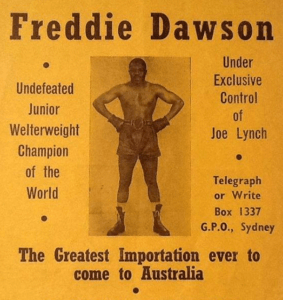
The long-reigning lightweight champion of Australia, Patrick (49-3, 43 KOs) gave the crowd a thrill when he knocked Dawson down for a count of “six” in the penultimate 11th round, but Dawson returned the favor twice in the final stanza, ending the contest with a punch so harsh that the poor Aussie needed five minutes before he was fit to leave the ring and would spend the night in the hospital as a precaution.
Dawson fought Bernard Docusen before 10,000-plus at Chicago Stadium on Feb. 4, 1949. An 8/5 favorite, Docusen lacked a hard punch, but the New Orleans cutie had suffered only three losses in 66 fights, had never been stopped, and had extended Sugar Ray Robinson the 15-round distance the previous year.
Dawson dismantled him. Docusen managed to get back on his feet after Dawson knocked him down in the sixth, but he was in no condition to continue and the referee waived the fight off. Dawson was then vacillating between the lightweight and welterweight divisions and reporters wondered whether it would be Robinson or Ike Williams when Dawson finally got his well-earned title shot.
Sugar Ray wasn’t in his future. Here are the results of his other matches with Ike Williams:
Dawson-Williams II (Jan. 28, 1946) – The consensus on press row was 7-2-1 or 7-3 for Dawson, but the match was ruled a draw. “[The judges and referee] evidently saw [Williams] land punches that nobody else did,” said the ringside reporter for the Philadelphia Inquirer.
Dawson-Williams III (Jan. 26, 1948) – Dawson lost a majority decision. The scores were 6-4, 5-4-1, and 4-4-2. The decision was booed. Ike Williams then held the lightweight title, but this was a non-title fight. (It was tough for an outsider to get a fair shake in Philadelphia, home to Ike Williams’ co-manager Frank “Blinky” Palermo who would go to prison for his duplicitous dealings as a fight facilitator.)
Dawson-Williams IV (Dec. 5, 1949) – This would be Freddie Dawson’s only crack at a world title and he came up short. Ike Williams retained the belt, winning a unanimous decision. The fight was close – 8-7, 8-7, 9-6 – but there was no controversy.
Dawson made three more trips to Australia before his career was finished. On the first of these trips, he knocked out Jack Hassen, successor to Vic Patrick as the lightweight champion of Australia. A 1953 article in the Sydney Sunday Herald bore witness to the esteem in which Dawson was held by boxing fans in Australia: “None of our boxers could withstand his devastating attacks which not only knocked them out but also knocked years off their careers,” said the author. “It is doubtful whether any Australian boxer in any division could have beaten Dawson.”
Dawson had his final fights in the Land Down Under, finishing his career with a record of 103-14-4 while answering the bell for 962 rounds. Following what became his final fight, he had an eye operation in Sydney that was reportedly so intricate that it required a two-week hospital stay. He injured the eye again in Manila while sparring in preparation for a match with the welterweight champion of the Philippines, a match that had to be aborted because of the injury. Dawson then disappeared, by which we mean that he disappeared from the pages of the newspaper archives that allow us to construct these kinds of stories.
What about Freddie Dawson the man? A 1944 story about him said he was an outstanding all-around athlete, “a champion in all athletic undertakings – basketball, baseball, track and even jitterbugging.” A story in a Sydney paper as he was preparing to meet Vic Patrick informs us that he had two young children, ages 2 and 1, owned his own home in Chicago, and drove a two-year-old Cadillac. But beyond these flimsy snippets, Dawson the man remains elusive.
What we learned, however, is that he was one of the most underrated boxers to come down the pike in any era, a borderline Hall of Famer who ought not have fallen through the cracks. Inside the ring, this guy was one tough hombre.
To comment on this story in the Fight Forum CLICK HERE
Featured Articles
Ringside at the Fontainebleau where Mikaela Mayer Won her Rematch with Sandy Ryan
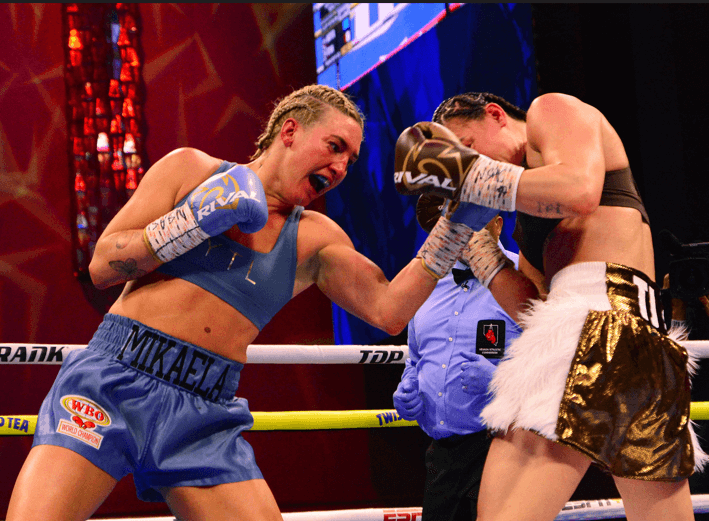
LAS VEGAS, NV — The first meeting between Mikaela Mayer and Sandy Ryan last September at Madison Square Garden was punctuated with drama before the first punch was thrown. When the smoke cleared, Mayer had become a world-title-holder in a second weight class, taking away Ryan’s WBO welterweight belt via a majority decision in a fan-friendly fight.
The rematch tonight at the Fontainebleau in Las Vegas was another fan-friendly fight. There were furious exchanges in several rounds and the crowd awarded both gladiators a standing ovation at the finish.
Mayer dominated the first half of the fight and held on to win by a unanimous decision. But Sandy Ryan came on strong beginning in round seven, and although Mayer was the deserving winner, the scores favoring her (98-92 and 97-93 twice) fail to reflect the competitiveness of the match-up. This is the best rivalry in women’s boxing aside from Taylor-Serrano.
Mayer, 34, improved to 21-2 (5). Up next, she hopes, in a unification fight with Lauren Price who outclassed Natasha Jonas earlier this month and currently holds the other meaningful pieces of the 147-pound puzzle. Sandy Ryan, 31, the pride of Derby, England, falls to 7-3-1.
Co-Feature
In his first defense of his WBO world welterweight title (acquired with a brutal knockout of Giovani Santillan after the title was vacated by Terence Crawford), Atlanta’s Brian Norman Jr knocked out Puerto Rico’s Derrieck Cuevas in the third round. A three-punch combination climaxed by a short left hook sent Cuevas staggering into a corner post. He got to his feet before referee Thomas Taylor started the count, but Taylor looked in Cuevas’s eyes and didn’t like what he saw and brought the bout to a halt.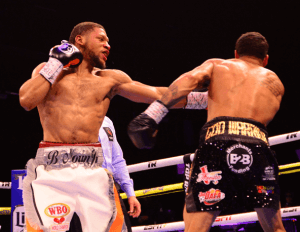
The stoppage, which struck some as premature, came with one second remaining in the third stanza.
A second-generation prizefighter (his father was a fringe contender at super middleweight), the 24-year-old Norman (27-0, 21 KOs) is currently boxing’s youngest male title-holder. It was only the second pro loss for Cuevas (27-2-1) whose lone previous defeat had come early in his career in a 6-rounder he lost by split decision.
Other Bouts
In a career-best performance, 27-year-old Brooklyn featherweight Bruce “Shu Shu” Carrington (15-0, 9 KOs) blasted out Jose Enrique Vivas (23-4) in the third round.
Carrington, who was named the Most Outstanding Boxer at the 2019 U.S. Olympic Trials despite being the lowest-seeded boxer in his weight class, decked Vivas with a right-left combination near the end of the second round. Vivas barely survived the round and was on a short leash when the third stanza began. After 53 seconds of round three, referee Raul Caiz Jr had seen enough and waived it off. Vivas hadn’t previously been stopped.
Cleveland welterweight Tiger Johnson, a Tokyo Olympian, scored a fifth-round stoppage over San Antonio’s Kendo Castaneda. Johnson assumed control in the fourth round and sent Castaneda to his knees twice with body punches in the next frame. The second knockdown terminated the match. The official time was 2:00 of round five.
Johnson advanced to 15-0 (7 KOs). Castenada declined to 21-9.
Las Vegas junior welterweight Emiliano Vargas (13-0, 11 KOs) blasted out Stockton, California’s Giovanni Gonzalez in the second round. Vargas brought the bout to a sudden conclusion with a sweeping left hook that knocked Gonzalez out cold. The end came at the 2:00 minute mark of round two.
Gonzalez brought a 20-7-2 record which was misleading as 18 of his fights were in Tijuana where fights are frequently prearranged. However, he wasn’t afraid to trade with Vargas and paid the price.
Emiliano Vargas, with his matinee idol good looks and his boxing pedigree – he is the son of former U.S. Olympian and two-weight world title-holder “Ferocious” Fernando Vargas – is highly marketable and has the potential to be a cross-over star.
Eighteen-year-old Newark bantamweight Emmanuel “Manny” Chance, one of Top Rank’s newest signees, won his pro debut with a four-round decision over So Cal’s Miguel Guzman. Chance won all four rounds on all three cards, but this was no runaway. He left a lot of room for improvement.
There was a long intermission before the co-main and again before the main event, but the tedium was assuaged by a moving video tribute to George Foreman.
Photos credit: Al Applerose
To comment on this story in the Fight Forum CLICK HERE
Featured Articles
William Zepeda Edges Past Tevin Farmer in Cancun; Improves to 34-0
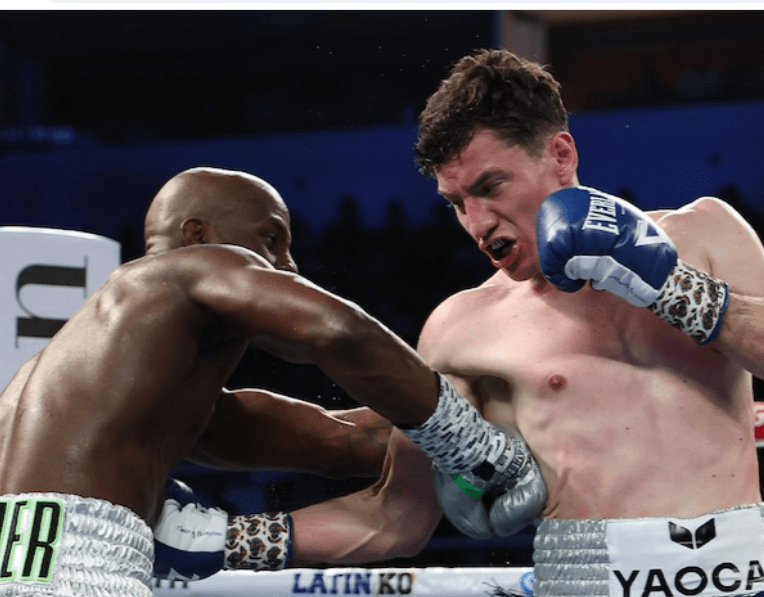
William Zepeda Edges Past Tevin Farmer in Cancun; Improves to 34-0
No surprise, once again William Zepeda eked out a win over the clever and resilient Tevin Farmer to remain undefeated and retain a regional lightweight title on Saturday.
There were no knockdowns in this rematch.
The Mexican punching machine Zepeda (33-0, 17 KOs) once more sought to overwhelm Farmer (33-8-1, 9 KOs) with a deluge of blows. This rematch by Golden Boy Promotions took place in the famous beach resort area of Cancun, Mexico.
It was a mere four months ago that both first clashed in Saudi Arabia with their vastly difference styles. This time the tropical setting served as the background which suited Zepeda and his lawnmower assaults. The Mexican fans were pleased.
Nothing changed in their second meeting.
Zepeda revved up the body assault and Farmer moved around casually to his right while fending off the Mexican fighter’s attacks. By the fourth round Zepeda was able to cut off Farmer’s escape routes and targeted the body with punishing shots.
The blows came in bunches.
In the fifth round Zepeda blasted away at Farmer who looked frantic for an escape. The body assault continued with the Mexican fighter pouring it on and Farmer seeming to look ready to quit. When the round ended, he waved off his corner’s appeals to stop.
Zepeda continued to dominate the next few rounds and then Farmer began rallying. At first, he cleverly smothered Zepeda’s body attacks and then began moving and hitting sporadically. It forced the Mexican fighter to pause and figure out the strategy.
Farmer, a Philadelphia fighter, showed resiliency especially when it was revealed he had suffered a hand injury.
During the last three rounds Farmer dug down deep and found ways to score and not get hit. It was Boxing 101 and the Philly fighter made it work.
But too many rounds had been put in the bank by Zepeda. Despite the late rally by Farmer one judge saw it 114-114, but two others scored it 116-112 and 115-113 for Zepeda who retains his interim lightweight title and place at the top of the WBC rankings.
“I knew he was a difficult fighter. This time he was even more difficult,” said Zepeda.
Farmer was downtrodden about another loss but realistic about the outcome and starting slow.
“But I dominated the last rounds,” said Farmer.
Zepeda shrugged at the similar outcome as their first encounter.
“I’m glad we both put on a great show,” said Zepeda.
Female Flyweight Battle
Costa Rica’s Yokasta Valle edged past Texas fighter Marlen Esparza to win their showdown at flyweight by split decision after 10 rounds.
Valle moved up two weight divisions to meet Esparza who was slightly above the weight limit. Both showed off their contrasting styles and world class talent.
Esparza, a former unified flyweight world titlist, stayed in the pocket and was largely successful with well-placed jabs and left hooks. She repeatedly caught Valle in-between her flurries.
The current minimumweight world titlist changed tactics and found more success in the second half of the fight. She forced Esparza to make the first moves and that forced changes that benefited her style.
Neither fighter could take over the fight.
After 10 rounds one judge saw Esparza the winner 96-94, but two others saw Valle the winner 97-93 twice.
Will Valle move up and challenge the current undisputed flyweight world champion Gabriela Fundora? That’s the question.
Valle currently holds the WBC minimumweight world title.
Puerto Rico vs Mexico
Oscar Collazo (12-0, 9 KOs), the WBO, WBA minimumweight titlist, knocked out Mexico’s Edwin Cano (13-3-1, 4 KOs) with a flurry of body shots at 1:12 of the fifth round.
Collazo dominated with a relentless body attack the Mexican fighter could not defend. It was the Puerto Rican fighter’s fifth consecutive title defense.
To comment on this story in the Fight Forum CLICK HERE
-
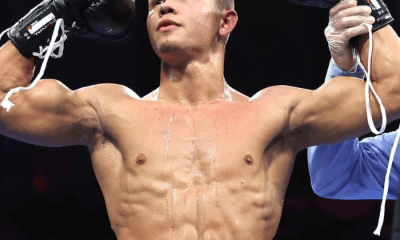
 Featured Articles3 weeks ago
Featured Articles3 weeks agoA Fresh Face on the Boxing Scene, Bryce Mills Faces His Toughest Test on Friday
-
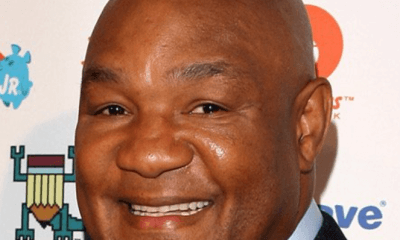
 Featured Articles2 weeks ago
Featured Articles2 weeks agoBernard Fernandez Reflects on His Special Bond with George Foreman
-

 Featured Articles1 week ago
Featured Articles1 week agoA Paean to George Foreman (1949-2025), Architect of an Amazing Second Act
-
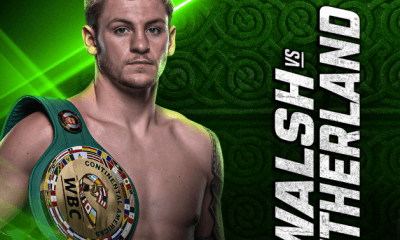
 Featured Articles2 weeks ago
Featured Articles2 weeks agoNotes and Nuggets from Thomas Hauser: Callum Walsh Returns to Madison Square Garden
-

 Featured Articles4 weeks ago
Featured Articles4 weeks agoFriday Boxing Recaps: Observations on Conlan, Eubank, Bahdi, and David Jimenez
-
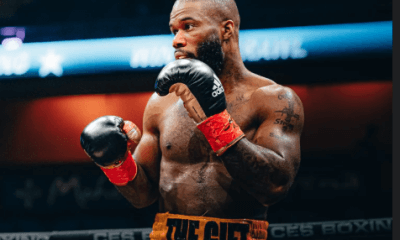
 Featured Articles2 weeks ago
Featured Articles2 weeks agoSpared Prison by a Lenient Judge, Chordale Booker Pursues a World Boxing Title
-
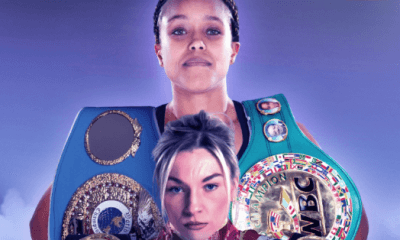
 Featured Articles4 weeks ago
Featured Articles4 weeks agoBoxing Odds and Ends: Mikaela Mayer on Jonas vs. Price and More
-
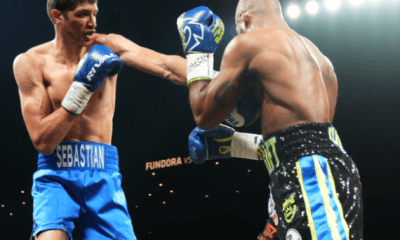
 Featured Articles2 weeks ago
Featured Articles2 weeks agoSebastian Fundora TKOs Chordale Booker in Las Vegas
















